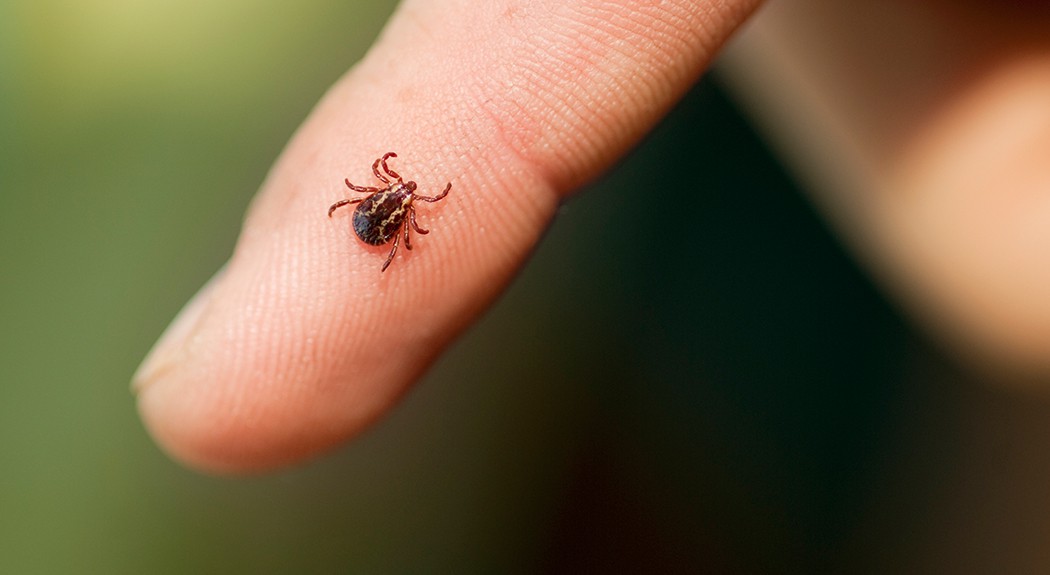If you’re outdoors a lot during the summer, you probably know to watch out for ticks. These insects, especially deer ticks, can transmit Lyme disease and other viruses. While ticks are most active during warmer months, they remain a concern long after Labor Day.
Deer ticks can be active as long as the ground isn’t covered with snow, or frozen. Which means a disease-carrying tick can bite you, and infect you, even after the first frost. According to the University of Rhode Island’s TickEncounter Resource Center, deer ticks, also known as blacklegged ticks, start to become active in their adult stage as summer fades away into fall. In the Northeast, there are more adult stage ticks in early October.
But ticks can also be an issue in the winter, according to TickEncounter. Ticks that didn’t find a host to latch onto when it was warmer outside can come out from under the snow when the ground thaws, and look for a host then.
Not all deer ticks are infected with the bacteria that cause Lyme disease, but it’s still a concern. Since the late 1990s, the number of reported cases of Lyme disease in the U.S. has tripled, researchers say. Lyme disease is rarely fatal but it can be debilitating. Its early symptoms resemble the flu, and a rash sometimes develops around the bite.
Preventing ticks
- Prevention is key. If you’re out hiking at any time of year, stay in the center of trails and avoid areas with thick vegetation and grass.
- The Centers for Disease Control and Prevention (CDC) also recommends that you use repellent containing 20 percent or more DEET on exposed skin. You should also use products that contain permethrin to treat pants and shoes, or choose outdoor clothing that is pre-treated with permethrin.
- Know what to look for: Adult deer ticks grow only to about the size of a sesame seed, and have reddish hind bodies with black markings and legs.
- After you come in from outside, you should take a bath or shower as soon as you can to wash off any ticks before they bite. Wash your clothes in hot water, or dry them on high heat.
- The CDC also advises people to examine pets after they come inside to make sure they aren’t bringing ticks with them.
What to do if you find a tick on your skin
If you do find a tick on your skin, you should take fine-tipped tweezers and grasp onto the insect as close to your skin as possible. Pull the tick upward. Once you remove the body of the tick, it can’t transmit disease. Wash the bite area and your hands.
Take special note of whether the tick was engorged, or full of blood. Ticks that look “puffy” are more likely to transmit diseases. You may also want to save the tick in a plastic baggie, in case you need to go to the doctor and identify the type of tick.
If you start to notice any of the signs of Lyme disease, including fever, headache, fatigue, or muscle or joint aches, call your doctor. Don’t let a fear of ticks keep you indoors. By taking the proper precautions, you can enjoy being outside all year long.




